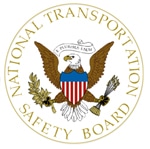
The NTSB action followed its investigation of five rear-end collisions where the NTSB concluded that crewmembers “failed to operate their trains at the required restricted speed.” Two of the rear-end collisions resulted in fatalities.
Said the NTSB:
“Signal systems provide for the safe separation between trains. However, there are times when trains are authorized to occupy the same sections of track. In these cases, safe train operations rely solely on crewmember compliance with the railroad’s restricted speed requirements.
“Typically, these requirements include being prepared to stop within one-half the range of vision. Complete understanding of, and strict compliance with, restricted speed requirements are absolutely mandatory to prevent catastrophic train collisions.”
Specifically, the NTSB urged the UTU and the Brotherhood of Locomotive Engineers and Trainmen to educate their respective rail membership so that all involved recognize “the importance of operating their trains in accordance with restricted speed operating rules.”
Additionally, the NTSB urged the UTU and the BLET to work collaboratively with railroads “to identify the potential for similar occurrences and to take appropriate mitigating actions.”
The NTSB also urged railroads to “emphasize adequate training and ensure the compliance of train crews operating at restricted speeds.”
The NTSB does not have regulatory authority – only investigative authority. Thus, the NTSB makes recommendations to carriers, labor organizations and the Federal Railroad Administration – the latter having regulatory authority over rail safety.
The five accidents referred to by the NTSB were:
* Red Oak, Iowa, April 17, 2011, on BNSF
* Low Moor, Va., May 21, 2011, on CSX
* Mineral Springs, N.C., May 24, 2011, on CSX
* DeWitt, N.Y., July 6, 2011, on CSX
* DeKalb, Ind., Aug. 19, 2011, on Norfolk Southern
UTU National Legislative Director James Stem, in commending the NTSB for its “diligence in helping to save lives,” said, “Compliance with restrictive speed is a common sense application of safety concepts when following another train. This is another example of operating rules that offer good advice.”
Related News
- Yardmaster Protection Act Introduced
- PHOTO GALLERY: 2025 Denver Regional Training Seminar
- Fighting for Stronger Heat Protections for Rail Workers
- Regional Training Seminar Sets (Mile-High) Record in Denver
- Registration Open for Anaheim Regional Training Seminar
- Help Promote Rail Crossing Safety on ENS Sign Awareness Day
- Streak of Organizing Wins, Strong Agreements Highlights the SMART-TD Difference
- Sisters Represent TD at Charity Mud Race
- New College Education Benefit Available for SMART-TD Members and Their Families
- Members drive legislative action in New England